
Signs of Sun Damage in Succulents: How to Identify and Prevent it
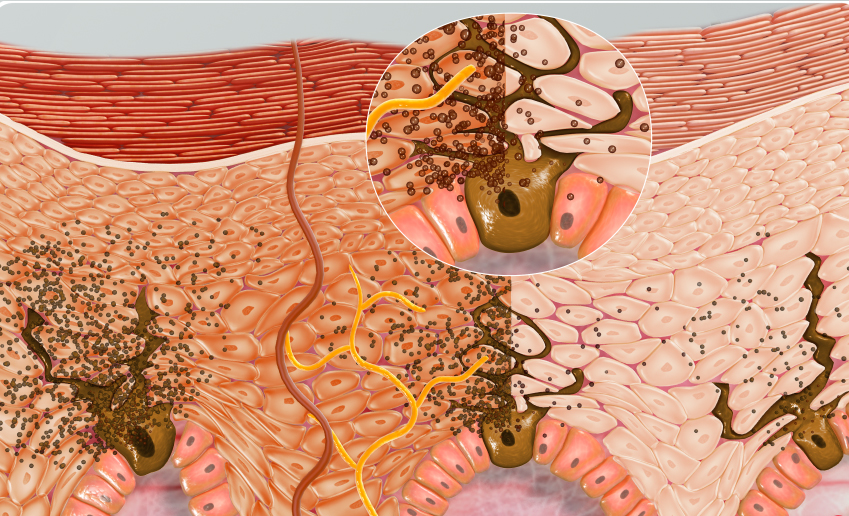
Succulents are popular plants known for their ability to thrive in dry and arid environments. With their unique and striking appearance, they have become a favorite among plant enthusiasts. However, even these resilient plants can be susceptible to sun damage if not properly cared for. Sun damage can manifest in various ways, affecting the overall health and appearance of succulents.
We will delve into the signs of sun damage in succulents and how to identify them. We will explore the different symptoms that can occur, such as sunburn, leaf bleaching, and etiolation. Additionally, we will discuss the importance of providing the right amount of sunlight and how to prevent sun damage by implementing proper care techniques. By understanding the signs and taking appropriate measures, you can ensure that your succulents thrive and maintain their vibrant beauty.
- Look for discoloration or yellowing of the leaves
- Check for wrinkling or shriveling of the leaves
- Watch out for sunburned spots or patches on the leaves
- Notice if the succulent is stretching or elongating towards the light source
- Ensure that the succulent is getting adequate shade or protection during the hottest parts of the day
- Provide a sunshade or move the succulent to a location with indirect sunlight
- Consider using a sheer curtain or window film to filter the intensity of the sunlight
- Adjust the watering schedule to prevent dehydration and further damage
- Use a well-draining soil mix to prevent waterlogged roots and root rot
- Avoid overfertilizing, as this can lead to increased sun sensitivity in succulents
- Frequently Asked Questions
Look for discoloration or yellowing of the leaves
One of the most common signs of sun damage in succulents is discoloration or yellowing of the leaves. This is often caused by excessive exposure to direct sunlight, especially during the hottest parts of the day. When succulents receive too much sunlight, their leaves may become bleached or develop yellow patches.
To identify sun damage, carefully examine the leaves of your succulents. Look for any changes in color, such as a pale or washed-out appearance. In some cases, the leaves may even turn completely yellow or white. This is a clear indication that your succulent is receiving too much sun and is at risk of sunburn.
To prevent sun damage in your succulents, it's important to provide them with the right amount of sunlight. While these plants thrive in bright light, they still need protection from intense sunlight. Here are some tips to help you prevent sun damage:
1. Provide shade during the hottest parts of the day
During the peak hours of sunlight, typically between 10 am and 4 pm, it's best to provide shade for your succulents. This can be achieved by moving them to a shaded area or by using shade cloth or a sheer curtain to filter the sunlight. By doing so, you can reduce the risk of sunburn and keep your succulents healthy.
2. Gradually acclimate your succulents to direct sunlight
If you recently purchased or moved your succulents to a sunnier location, it's important to acclimate them gradually. Succulents that are accustomed to lower light conditions need time to adjust to direct sunlight. Start by placing them in a partially shaded area and gradually expose them to more sunlight over the course of a few weeks.
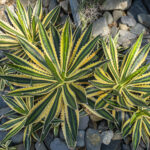 Can Split Rock Succulents Develop Wrinkles?
Can Split Rock Succulents Develop Wrinkles?3. Water your succulents properly
Proper watering is crucial for preventing sun damage in succulents. When succulents are dehydrated, they become more susceptible to sunburn. Ensure that you are watering your succulents thoroughly but infrequently, allowing the soil to dry out between waterings. This will help maintain their overall health and resilience to sun damage.
4. Use a well-draining soil mix
Succulents require well-draining soil to prevent root rot and other issues. When the soil retains excess moisture, it can exacerbate the effects of sun exposure. Use a specialized succulent or cactus potting mix that promotes good drainage. This will allow the roots to breathe and prevent waterlogged soil, reducing the risk of sun damage.
By being attentive to the signs of sun damage and implementing these preventive measures, you can keep your succulents thriving and vibrant.
Check for wrinkling or shriveling of the leaves
Sun damage in succulents can be easily identified by checking for wrinkling or shriveling of the leaves. When exposed to excessive sunlight, succulents may lose water faster than they can absorb it, resulting in dehydration. This causes the leaves to become wrinkled or shriveled, looking less plump and healthy.
Watch out for sunburned spots or patches on the leaves
Sunburned spots or patches on the leaves of your succulents are a clear sign of sun damage. These spots may appear as brown or black areas on the leaves, indicating that they have been exposed to excessive sunlight.
 Top Low Maintenance Indoor Succulent Plants for Easy Care and Beauty
Top Low Maintenance Indoor Succulent Plants for Easy Care and BeautyWhen succulents are exposed to intense sunlight without proper protection, the leaves can become scorched and damaged. This happens because succulents have adapted to thrive in arid environments with intense sunlight, but they still need some shade or indirect light to prevent sunburn.
To prevent sunburned spots on your succulents' leaves, it is important to provide them with the right amount of sunlight. Avoid placing them in direct sunlight for extended periods, especially during the hottest hours of the day. Instead, opt for a location with bright, indirect light or provide some shade using sheer curtains or blinds.
Tip: If you notice sunburned spots on your succulents, it is essential to move them to a shadier location immediately to prevent further damage.
Notice if the succulent is stretching or elongating towards the light source
One of the first signs of sun damage in succulents is when you notice them stretching or elongating towards the light source. Succulents are known for their compact and dense growth habit, so when you see them reaching out for more light, it's a clear indication that they are not receiving enough sunlight.
This stretching phenomenon, scientifically known as etiolation, occurs when succulents are grown in low-light conditions. The lack of sufficient sunlight triggers the plant's survival mechanism, causing it to elongate to maximize its exposure to light. While this may seem like a good thing, it actually weakens the succulent's structure and makes it more prone to sun damage.
To prevent this from happening, it's important to place your succulents in a location where they can receive at least 6 hours of direct sunlight per day. If you notice your succulents stretching, it's a sign that they need more light. Consider moving them to a brighter spot or providing additional artificial light if necessary.
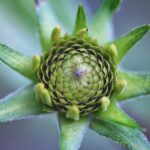 Can You Mist Succulents Every Day? What You Need to Know
Can You Mist Succulents Every Day? What You Need to KnowKey points:
- Stretching or elongating towards the light source is a sign of sun damage in succulents.
- Etiolation weakens the succulent's structure, making it more susceptible to sun damage.
- Ensure your succulents receive at least 6 hours of direct sunlight per day to prevent stretching.
- If you notice stretching, move your succulents to a brighter spot or provide additional artificial light.
Ensure that the succulent is getting adequate shade or protection during the hottest parts of the day
Succulents are known for their ability to tolerate sunny conditions, but excessive exposure to the sun can still cause damage. To prevent sun damage in your succulents, it is important to ensure that they are getting adequate shade or protection during the hottest parts of the day.
Here are some signs to look out for that may indicate sun damage in your succulents:
- Leaf discoloration: Sun-damaged succulents may exhibit yellowing, browning, or reddening of their leaves. The discoloration is often more pronounced on the side of the plant that receives the most sunlight.
- Leaf bleaching: In extreme cases, succulent leaves may become completely white or translucent due to sunburn. This is a clear indication that the plant is being exposed to excessive sunlight.
- Leaf wrinkles: Sun-damaged succulents may develop wrinkled or shriveled leaves. This is a sign of dehydration caused by excessive heat and sunlight.
- Stunted growth: If your succulent is not growing as vigorously as it used to, it could be a result of sun damage. High temperatures and intense sunlight can inhibit the plant's growth and overall health.
- Scarring or scorch marks: Prolonged exposure to intense sunlight can lead to scarring or scorch marks on the leaves or stems of succulents. These marks may appear as brown spots or patches.
To prevent sun damage in your succulents, consider the following measures:
- Provide shade: If you notice signs of sun damage, move your succulents to a location with partial shade. This can be achieved by placing them under a tree, awning, or providing shade cloth.
- Limit sun exposure: Avoid exposing your succulents to direct sunlight during the hottest parts of the day, typically between 10 am and 4 pm. Instead, place them in areas with indirect or filtered light.
- Gradual acclimation: If you plan to move your succulents to a sunnier spot, it is important to acclimate them gradually. Start by exposing them to a few hours of direct sunlight per day and gradually increase the duration over a few weeks.
- Watering schedule: Proper watering can help prevent sun damage. Succulents should be watered thoroughly but infrequently, allowing the soil to dry out completely between waterings. This helps the plants withstand the heat and reduces the risk of dehydration.
- Use sun protection: Consider using shade cloth, umbrellas, or other forms of sun protection to shield your succulents from intense sunlight. This can be particularly helpful during heatwaves or in regions with extreme temperatures.
By paying attention to these signs and taking preventive measures, you can ensure that your succulents thrive and remain healthy, even in sunny conditions.
Provide a sunshade or move the succulent to a location with indirect sunlight
One of the most common signs of sun damage in succulents is sunburn. When succulents are exposed to intense sunlight for extended periods, their leaves can become scorched and turn brown or yellow.
 Epsom Salt for Succulent Plants: A Complete Guide
Epsom Salt for Succulent Plants: A Complete GuideTo prevent sunburn, it is essential to provide a sunshade or move the succulent to a location with indirect sunlight. Placing the plant under a tree or using a sheer curtain can help filter the harsh rays of the sun and protect the succulent from damage.
Another sign of sun damage in succulents is etiolation. Etiolation occurs when a succulent stretches and becomes elongated in an attempt to reach for more sunlight. This often happens when succulents are not receiving enough light and are trying to compensate for the lack of it.
If you notice your succulent becoming leggy and stretched out, it is a sign that it needs more sunlight. In this case, gradually introduce the succulent to brighter conditions to prevent shock. Start by placing it in a location with indirect sunlight and gradually move it to a spot with more direct sunlight over a few weeks.
Additionally, sun damage can manifest as discoloration or bleaching of the leaves. Succulents with vibrant and colorful leaves may lose their intensity and become pale or washed out when exposed to excessive sunlight.
To prevent discoloration, ensure that your succulents are receiving the right amount of light. Different succulent species have different light requirements, so it is crucial to research the specific needs of your plants. Adjust their placement accordingly to provide the optimal amount of sunlight.
Lastly, sun damage can also cause wilting or shriveling of succulent leaves. When exposed to intense heat and sunlight, succulents can lose moisture more rapidly, leading to dehydration.
To prevent wilting, it is crucial to water your succulents adequately. Check the moisture level of the soil regularly and water them when the top inch of soil feels dry. Additionally, provide a well-draining soil mix and ensure that excess water can freely flow out of the pot to prevent waterlogged conditions.
 Is It Normal for My Succulent to Have an Unusual Growth?
Is It Normal for My Succulent to Have an Unusual Growth?Identifying and preventing sun damage in succulents is essential to keep them healthy and thriving. By providing a sunshade or adjusting their sunlight exposure, you can prevent sunburn and etiolation. Monitoring the color of their leaves and adjusting their light requirements accordingly can prevent discoloration. Lastly, proper watering practices can help prevent wilting and dehydration. By following these guidelines, you can ensure that your succulents remain beautiful and vibrant.
Consider using a sheer curtain or window film to filter the intensity of the sunlight
One of the most common issues that succulent owners face is sun damage. Succulents are known for their ability to thrive in dry and arid conditions, but they can still be sensitive to excessive sunlight. In this article, we will discuss the signs of sun damage in succulents and provide tips on how to identify and prevent it.
Signs of Sun Damage:
- Color changes: One of the first signs of sun damage in succulents is a change in color. The leaves may turn yellow or brown, indicating that they are getting too much sun.
- Burn marks: Sunburn in succulents manifests as brown or white spots on the leaves. These spots can become dry and crispy over time.
- Leaf distortion: Overexposure to sunlight can cause the leaves of succulents to become misshapen or deformed. They may curl up or appear shriveled.
- Stretched growth: Succulents that are not receiving enough light may stretch out in an effort to reach for sunlight. This can result in leggy, elongated stems.
How to Identify Sun Damage:
- Observe the color of the leaves. Healthy succulent leaves are typically green, whereas sun-damaged leaves may have a yellow or brownish tinge.
- Inspect the leaves for burn marks or spots. Sunburned succulents often exhibit visible blemishes on their leaves.
- Check for any signs of leaf distortion or unusual growth patterns. Misshapen or elongated leaves can be an indication of sun damage.
Preventing Sun Damage:
Here are some tips to help prevent sun damage in your succulents:
- Provide adequate shading: Consider using a sheer curtain or window film to filter the intensity of the sunlight. This will help protect your succulents from direct exposure to harsh rays.
- Gradually acclimate your succulents to sunlight: If you are moving your succulents from an indoor to an outdoor environment, make sure to expose them to sunlight gradually. This will allow them to adjust and avoid sudden sunburn.
- Rotate your succulents: Regularly rotate your succulents to ensure that all sides receive equal amounts of sunlight. This will help prevent uneven growth and sun damage.
- Water properly: Succulents that are dehydrated are more susceptible to sun damage. Make sure to water your succulents according to their specific needs to keep them healthy and resilient.
By being aware of the signs of sun damage in succulents and taking preventive measures, you can ensure that your plants stay vibrant and thriving. Remember to provide them with the right amount of sunlight and care, and they will reward you with their unique beauty.
 Can Succulents Die from Overwatering and Lack of Sunlight?
Can Succulents Die from Overwatering and Lack of Sunlight?Adjust the watering schedule to prevent dehydration and further damage
One of the most common signs of sun damage in succulents is dehydration. When exposed to excessive sunlight, succulents can lose moisture rapidly, leading to wilted leaves and a shriveled appearance. To prevent further damage, it is crucial to adjust the watering schedule of your succulents.
Firstly, make sure to water your succulents deeply and thoroughly. This means allowing the water to penetrate the soil and reach the roots. However, it is important to avoid overwatering, as this can lead to root rot. A good rule of thumb is to water your succulents only when the soil is completely dry. You can check this by inserting your finger into the soil up to the first knuckle; if it feels dry, it's time to water.
Additionally, consider watering your succulents in the morning or early evening when the sun is less intense. This allows the plants to absorb the water before the heat of the day, minimizing the risk of sun damage. Avoid watering during the peak hours of sunlight, as this can cause the water droplets to act as magnifying glasses, intensifying the sun's rays and potentially burning the leaves.
Furthermore, using well-draining soil is essential for preventing succulent dehydration. Succulents thrive in soil that allows excess water to flow out easily, preventing waterlogged roots. You can achieve this by adding perlite or coarse sand to your potting mix, ensuring proper drainage.
Adjusting your succulents' watering schedule is crucial for preventing dehydration and further sun damage. Water deeply and thoroughly, but avoid overwatering. Choose the right time of day to water and use well-draining soil to keep your succulents healthy and thriving.
Use a well-draining soil mix to prevent waterlogged roots and root rot
One of the most common signs of sun damage in succulents is root rot, which occurs when the roots are constantly exposed to excessive moisture. To prevent this, it is crucial to use a well-draining soil mix that allows excess water to flow out of the pot.
Avoid using regular potting soil, as it tends to retain water and can lead to waterlogged roots. Instead, opt for a specialized succulent soil mix or create your own by combining equal parts of perlite, coarse sand, and potting soil. This will ensure that the water drains quickly, keeping the roots healthy and preventing root rot.
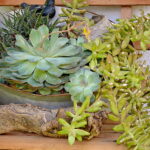 Trimming Succulents: Can I Safely Prune the Top of an Overgrown Plant?
Trimming Succulents: Can I Safely Prune the Top of an Overgrown Plant?When repotting your succulents, make sure to choose a pot with drainage holes at the bottom to allow excess water to escape. Additionally, consider adding a layer of small rocks or pebbles at the bottom of the pot before adding the soil. This will further enhance drainage by creating an air gap between the soil and the bottom of the pot.
Key Points:
- Use a well-draining soil mix to prevent waterlogged roots and root rot.
- Avoid using regular potting soil and opt for a specialized succulent soil mix or create your own.
- Choose a pot with drainage holes and add a layer of rocks or pebbles at the bottom for improved drainage.
Avoid overfertilizing, as this can lead to increased sun sensitivity in succulents
Signs of Sun Damage in Succulents
When it comes to caring for succulents, one of the common issues that plant enthusiasts face is sun damage. While succulents are known for their ability to thrive in sunny conditions, prolonged exposure to intense sunlight can harm these plants. It's important to be able to identify the signs of sun damage in succulents to take appropriate action and prevent further harm.
1. Discoloration: One of the first signs of sun damage in succulents is discoloration. The leaves may turn yellow, brown, or even white in some cases. This discoloration is a result of the sun's intense rays burning the plant tissue.
2. Sunburned Spots: Sunburned spots appear as small, brown or white patches on the leaves. These spots are usually irregularly shaped and can become more prominent if the succulent is exposed to direct sunlight for extended periods.
3. Leaf Wrinkling: Another sign of sun damage is leaf wrinkling. Succulent leaves typically have a plump and firm appearance. However, when exposed to excessive sunlight, the leaves can start to shrivel and wrinkle.
 Can Succulents Survive a Freeze Unprotected?
Can Succulents Survive a Freeze Unprotected?4. Stretched and Leggy Growth: Succulents that are not receiving enough sunlight tend to stretch and grow leggy. However, on the other hand, succulents that are exposed to too much sun can also exhibit stretched and leggy growth as a result of trying to escape the intense rays.
How to Identify and Prevent Sun Damage in Succulents
Now that you know the signs of sun damage in succulents, it's essential to take steps to prevent it. Here are some tips to help you identify and prevent sun damage in your succulents:
- Provide Adequate Shade: If you notice signs of sun damage in your succulents, consider providing them with some shade. Move them to a spot where they receive indirect or filtered sunlight, especially during the hottest parts of the day.
- Gradually Introduce Sunlight: If you have recently acquired a new succulent, it's crucial to acclimate it to sunlight gradually. Start by placing it in a location with a few hours of indirect sunlight and gradually increase the exposure over a few weeks.
- Use Sunscreen: Yes, you read that right! Some succulents can benefit from a thin layer of sunscreen. You can use a product specifically designed for plants or create a DIY sunscreen by diluting it with water and spraying it on the leaves.
- Water Properly: Proper watering is essential for succulents' overall health and can help prevent sun damage. Ensure that your succulents are adequately hydrated, as plants that are stressed due to lack of water are more prone to sunburn.
- Monitor Lighting Conditions: Keep an eye on the lighting conditions in your succulent's environment. If you notice that the intensity of the sunlight has increased, consider adjusting the positioning or providing additional shade.
By being vigilant and taking these preventive measures, you can ensure that your succulents thrive and grow beautifully, free from the damaging effects of excessive sunlight.
Frequently Asked Questions
1. What are the signs of sun damage in succulents?
The signs of sun damage in succulents include yellowing or bleaching of leaves, brown spots or patches, and wilting or shriveling of the plant.
2. How can I identify sun damage in my succulents?
 Protecting Succulents: Tips for Cold Weather Survival
Protecting Succulents: Tips for Cold Weather SurvivalYou can identify sun damage in your succulents by closely examining the leaves for discoloration, checking for wilting or shriveling, and comparing their appearance to healthy succulents.
3. How can I prevent sun damage in my succulents?
To prevent sun damage in succulents, provide them with the right amount of sunlight by gradually acclimating them to brighter conditions, provide shade during the hottest parts of the day, and ensure proper watering to maintain their health and resilience.
4. Can succulents recover from sun damage?
Yes, succulents can recover from sun damage with proper care and attention. By removing affected leaves, providing adequate shade and watering, and adjusting their sun exposure, succulents can rejuvenate and regain their health.
If you want to read more articles similar to Signs of Sun Damage in Succulents: How to Identify and Prevent it, you can visit the Care and Maintenance category.

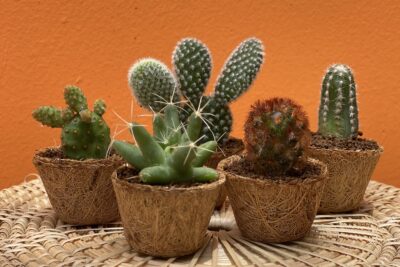
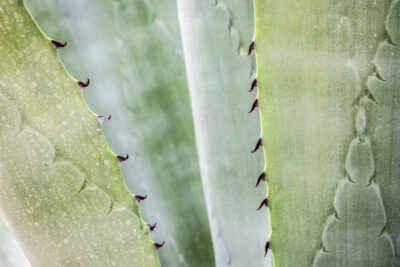



You Must Read